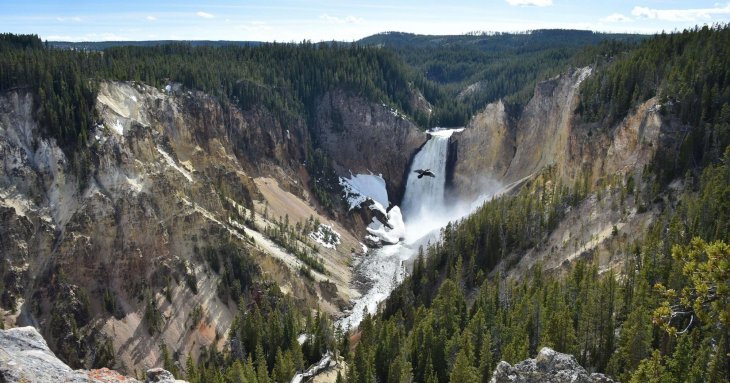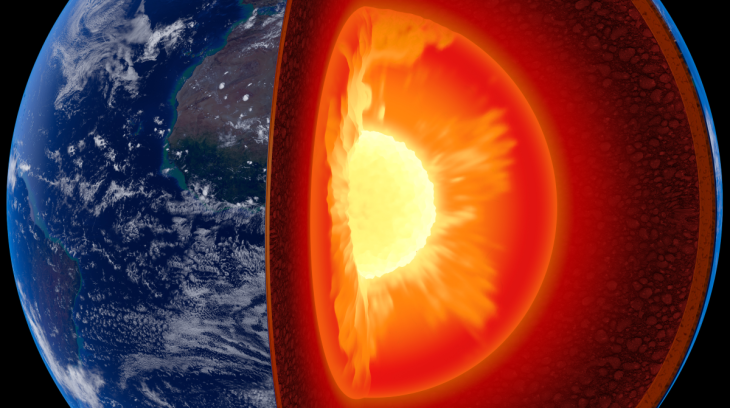Under The Earth’s Surface, There Are Mountains Higher Than Mount Everest
Aadhya Khatri - Apr 24, 2019

The new study proves that what is under the Earth's surface is more complex than we used to think
- Delhi Is The World’s Most Polluted Capital City For Three Years In A Row
- Indian Farmers Install High-Tech, Night-Vision CCTV Cameras To Protect Themselves
- Looking For The Best Electric Bike In India 2021? Take A Look At These
We have not found any way to see what goes beneath us. For so long, we put our trust on what Carl Sagan said in 1996: “We live on a hunk of rock and metal that circles a humdrum star.” Our best effort to drill to the Earth’s core comes in the form of a borehole called the Kola Deep, which covers only 0.2% of the distance to where we want to go. So the pictures you see in students’ textbook is the best we know at the moment.
However, experts like Barbara Romanowicz, a French geophysicist and an expert on imaging the earth's interior, are about to change that. They scan under the surface by using seismic waves in the same way ultrasound is utilized in hospitals to give doctors a look at what happens inside patients’ bodies. Much to our surprise, what they found is a dynamic landscape, not layers of different minerals.
The mantle seems to structure like an onion with many different layers. When scientists look down 410 miles, they found huge ranges of mountains there, the tallest peak may even surpass Mount Everest. The layers are separated by hot rock plumes. Under them and on the core there are two blobs.
The Blobs And The Mountains
What they found was revolutionary, but scientists take a particular interest in the blobs as they can have an impact on our life on the Earth's surface. According to Maria Tsekhmistrenko, a member of the Oxford DTP and Seismology group of the Earth Science department, hot mantle plumes source from these blobs and they can set off violent volcanic eruptions when they reach the surface.
Tsekhmistrenko has found proof of the correlation between the blob under Africa and the La Reunion mantle plume that was the trigger of a range of eruptions in what is now India, which in combination with the asteroid, led to the extinction of the dinosaurs.
Iceland was made by the effect of a plume and another one is causing the rumbling activities under Yellowstone. She also claimed that the connection between these events and climate changes is strong.

The source and activity of mantle bobs are still shrouded in mystery even after the use of seismic waves, largely because this is an indirect method. The speed of waves is affected by the temperature and texture of the materials they go through. Scientists then measure the motions from the Earth surface and study them to come up with their own speculation of what is under us. However, the waves cannot tell us the materials are cold, hot, light, or dense, leaving a lot of space that needs to be filled.
Sanne Cottaar at University of Cambridge said that the blobs are made up of dense rocks that traveled to the mantle’s bottom a long time ago. Since they are on top of a hot core, their temperature will rise with time and become lighter.
Our Planet Is Structured Like An Onion
That theory is consistent with what Romanowicz thought, which claims that the Earth is made up of layers. In the past, experts treated the mantle as a single layer that moves about under the influence of the core’s heat.
More recent evidence shows that things are not that straightforward. It seems like each layer evolves in its own way. At 410 mile, there is a change in the structure of the mantle. However, when they reach the 600-mile milestone, they run into obstacles.
Under the mantle, that layer is exceptionally complex. The core’s external is made up of iron alloy that shares a similar behavior with ocean water. The turbulence of the layer is the source of the Earth’s magnetic field that shields our planet from cosmic radiation and solar storms.

The core is at the center, which takes the shape of an iron ball measuring 760 miles in width. The seismic wave study shows that the ball is made up of iron crystals. Even when they have a higher temperature than the surface of the Sun, they are still reliable as the result of being under extremely high pressure. The core was solidified about one billion years ago, and it rotates at a higher speed than our planet. Experts still have a lot of questions about how the core is structured.
Study The History Of The Earth
What scientists after is to find out how Earth was formed and become a planet life can thrive by connecting all the layers. According to David J. Stevenson, a professor of planetary science at Caltech thought that it started 4.5 billion years ago when the Earth and a planet at the size of Mars collided. After the crash, the Moon was formed, but the incident also reshaped Earth.
As a result of the collision, the material under the surface might have been stirred or melted, maybe both, which make solid and liquid material to be set apart. An example is the separation of the core and the mantle. What we live on today is the final state after the crash. That incident might also create the layering structure and the blobs we are studying.
Romanowicz said that one way to discover more about how the Earth was formed is to create the Pacific Array, a series of detectors in the ocean that can gather and measure the seismic waves traveling through the inner of the planet. That is what scientist have been working on for more than thirty years now. Romanowicz highlighted the importance of that network by saying that human needed to study more about the lower mantle.
Stevenson wishes that we could have trips like what Jules Verne described in his novels. He even proposed the idea of making a probe that can reach the Earth’s core. That sounds ironic enough, but anyway, we have to find a way to study the mantle properly. He claimed that to know a place, you need to be there, and by “you” he meant a machine or a robot, not a real human being.
Featured Stories

Features - Jul 01, 2025
What Are The Fastest Passenger Vehicles Ever Created?

Features - Jun 25, 2025
Japan Hydrogen Breakthrough: Scientists Crack the Clean Energy Code with...

ICT News - Jun 25, 2025
AI Intimidation Tactics: CEOs Turn Flawed Technology Into Employee Fear Machine

Review - Jun 25, 2025
Windows 11 Problems: Is Microsoft's "Best" OS Actually Getting Worse?

Features - Jun 22, 2025
Telegram Founder Pavel Durov Plans to Split $14 Billion Fortune Among 106 Children

ICT News - Jun 22, 2025
Neuralink Telepathy Chip Enables Quadriplegic Rob Greiner to Control Games with...

Features - Jun 21, 2025
This Over $100 Bottle Has Nothing But Fresh Air Inside

Features - Jun 18, 2025
Best Mobile VPN Apps for Gaming 2025: Complete Guide

Features - Jun 18, 2025
A Math Formula Tells Us How Long Everything Will Live

Features - Jun 16, 2025
Comments
Sort by Newest | Popular